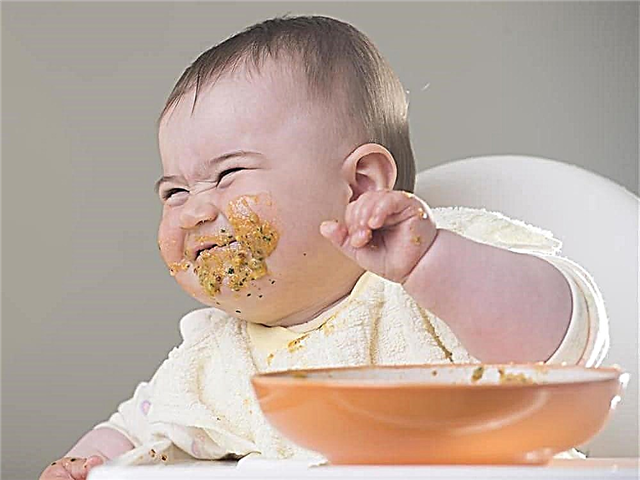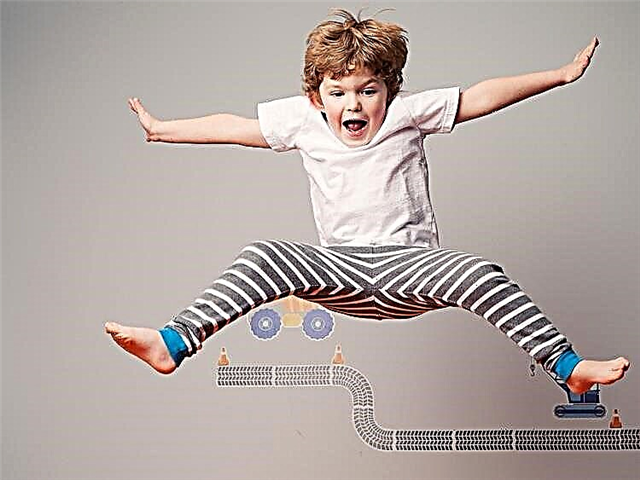Cartoons continue to dominate the life of a modern child. However, more and more often, the meaning and quality of animation does not match the development goals of children and their needs. And this is especially true for the products of the American Dream Factory. Psychologists believe that most foreign cartoons simply cannot be shown to children, and the rest can only be watched under strict parental censorship and with obligatory adult comments. Is foreign animation dangerous for children? What are the criteria for harmful cartoons?

Today's upbringing often looks like this: adults are busy with different things, and the baby, so as not to interfere, is seated in front of a TV or computer screen. And this child looks around the clock all in a row, and after a couple of months he literally cannot breathe without the usual dose of colorful cartoons. Is it helpful? Psychologists categorically answer: "No!" Let's look at specific examples of popular foreign animated films to see what psychological impact they have on children's consciousness and behavior.
Female images: sexuality and cruelty
Experts say that in modern animation, female images are deprived of romance by endowing them with excessive realism, cruelty and physiology. At the same time, such feminine qualities as shyness, modesty and chastity, traditional for old domestic cartoons, are ridiculed.
For example, the Winx animated series, insanely popular among girls, depicts the main characters with huge eyes, abnormally long legs and in very revealing outfits. And if you add an excessively thin waist here, then it begins to seem that cartoon girls with their ambiguous appearance popularize vulgarity and anorexia. Psychologists are sure: stereotypes of adult behavior, especially eroticism, cannot be shown in children's cartoons!

In the cartoon "Shrek" the main character from a beautiful princess turns into a green monster. And she does not behave like a woman at all: aggressive and even cruel. And this episode with the murder of the unfortunate bird, which swells from singing and then bursts! Did your children laugh at the dead bird? Can you remember at least one main heroine of Russian fairy tales who would do this with forest animals? Plus, Princess Fiona does it in a very infectious and fun way, as if encouraging children to follow her lead.
Destruction of family values
Perhaps you can't find a more popular cartoon than a series about the eccentric yellow Simpsons family. However, many psychologists and parents consider this comedy animated film to be propaganda of cruelty, unhealthy family relationships and even drug addiction. So, in some episodes, they subtly and, which is especially scary, witty laugh at the elderly and sick people. For example, a turtle steals the denture of old Simpson, and he cannot catch up with her. And there are a lot of similar stories in the series, on which whole generations in the USA and Russia have grown up.

After watching many Disney cartoons, child psychologists have discovered a strange pattern: the beautiful and young heroine is in most cases childless, but for some reason mothers are portrayed as ugly and loud, with vague figures. It turns out that after watching such cartoons, young spectators may not have a desire to create a family and have children. So, in the animated film "Beauty and the Beast", the main character is shown as beautiful and carefree, and the eccentric woman with screaming babies for some reason causes disgust.
Is it all that bad?
Perhaps, American cartoons receive mostly negative comments from psychologists. There is a high aggressiveness of Disney cartoons, the introduction of negative patterns of behavior and gender identity into children's consciousness. Yes, and the heroes, personifying a good beginning, deal with evil physically. In old Soviet animated films, evil characters were more often persuaded and re-educated.
Of course, in general, Disney cartoons leave a completely different feeling after watching than Soviet and even modern Russian films. Ours are certainly much more sincere, purer and kinder. However, it is not entirely correct to consider all American animation products as a single mass. Compare, for example, cheeky "South Park" and touching "Gummy Bears" - they, to put it mildly, are not quite alike and have completely different effects on children. And how wonderful the beauty of motherhood and family relationships is shown in such cartoons as "Bambi the Deer", "The Lion King" or "101 Dalmatians".
Remember that cartoons do not raise a child, but you, parents. Whatever is shown to children on the screen, they also see what is happening in their families, what adults teach them. Babies can be protected from the excessive influence of cartoons by limiting the viewing time. And another effective way is a reasonable selection of cartoon products.We also read on the topic:Some rules for watching children's cartoons
Signs of harmful cartoons
Each parent can independently determine how harmful this or that cartoon is for his child. The presence of at least one "harmful" sign should serve as the basis for excluding this animated product from children's viewing.
- The main characters of the cartoon behave inappropriately: they kill, steal, harm, maim. Even if all this is presented in a humorous manner.
- This behavior of the heroes often goes unpunished or leads to gaining popularity, wealth, or public approval.
- In the cartoon, the characters demonstrate dangerous behavior, which, if repeated by a child in real life, can be harmful to health and life.
- Cartoon characters show behavior that is non-standard for their gender: female characters behave like men, and men behave like women.
- In the picture you can see scenes of neglect of people, as well as animals and plants. For example, a mockery of disability, old age, or social inequality.
- The main characters have a repulsive appearance. For young children, there is often an equal sign between the words “good” and “beautiful”. That is, they need goodies to be not only good, but also cute.
- The picture promotes an idle lifestyle, the characters achieve their goals in an easy way or through deception.
- The authors ridicule or show in a negative light family values. Children constantly conflict with adults, spouses are disrespectful to each other, parents humiliate their child.
Every adult is obliged to select cartoons for his child, focusing primarily on the child's reaction, the plot of the picture and his own feelings. After all, a good parent always knows what his baby is watching and how long he sits in front of the TV screen. Finally, with a good parent, the child will happily go to play and communicate, easily tearing himself away from even the best cartoon in the world.
We also read:
- How We Lose Our Children
- Educational programs and cartoons for kids: are they always useful?
- The impact of modern gadgets on children (pros and cons) - https://razvitie-krohi.ru/psihologiya-detey/vliyanie-sovremennyih-gadzhetov-na-detey-plyusyi-i-minusyi.html
- 10 signs of children's dependence on computer games and the Internet: harm from a computer - https://razvitie-krohi.ru/psihologiya-detey/zavisimost-detey-ot-kompyutera.html
In this small program (TVTs - 2003), experienced psychologists consider the impact of modern cartoons on the minds of children. A documentary film for parents who care about children.
[sc: ads]



